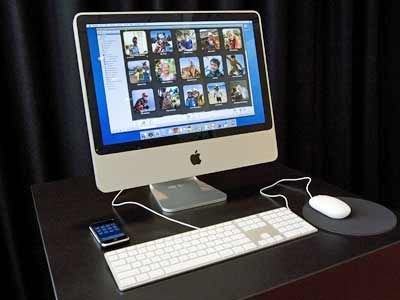
Computers have come a long way in the past few decades -- from filling up a room to slim and sleek designs that can nearly fit in your pocket. Take a look at some of the old and new models and learn about all the different features and types of these amazing machines.
Advertisement
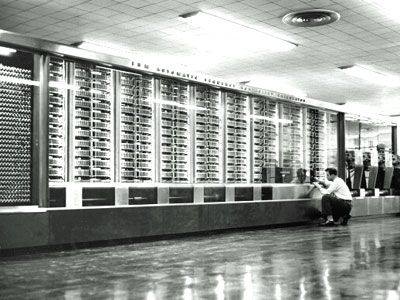
IBM's Harvard Mark I Automatic Sequence Controlled Calculator (ASCC) was presented to Harvard University in 1944. It is sometimes described as "the beginning of the era of the modern computer" and weighed 10,000 pounds. Move on to the next page to see how IBM's computers became more human-sized in the 1950s.
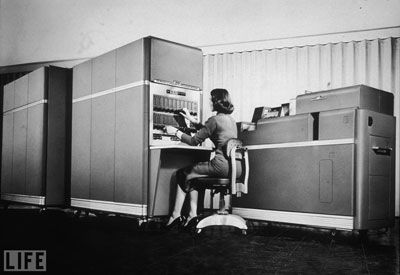
A woman works at an IBM 650 computer in 1955, which was designed for electro-mechanical punch card-processing. See the first computer with a motherboard next.
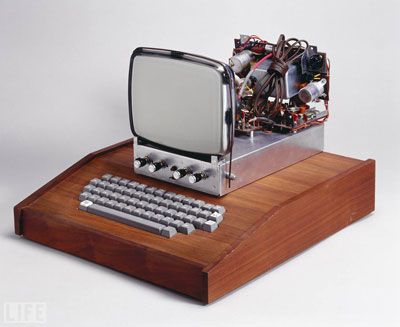
The Apple I was the first computer to come with a fully assembled motherboard (central printed circuit board) in 1976. It sold for $666.66 and let Apple begin a three-decades-and-counting run as a global trendsetter among tech lovers. It was designed by Apple co-founder Steve Woziak.
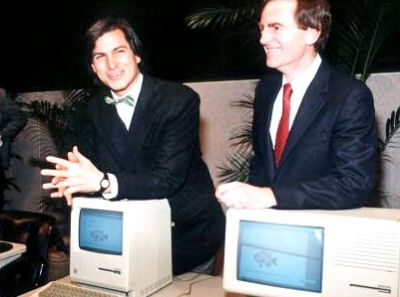
After several other enhancements to the basic Apple model, Steve Jobs unveiled the first Macintosh computer in 1984. It was the first successful computer to have a mouse and graphical user interface.
Advertisement
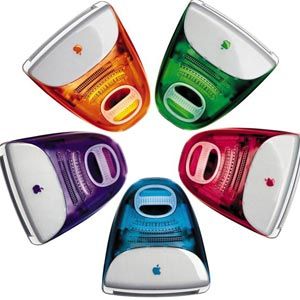
Apple eventually released an array of candy-colored iMacs in 1998. This assortment was featured dancing across the screen to The Rolling Stones song "She's a Rainbow" in a popular ad campaign.
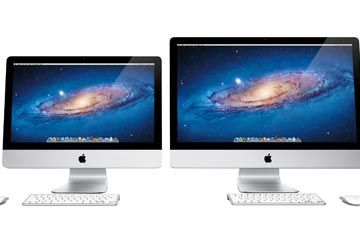
The 2011 editions of the iMac lineup came in two different screen sizes and four different price points. One of the fastest computers on the market is on the next page.
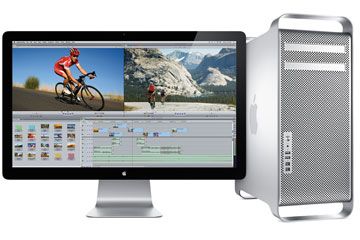
Apple says the Mac Pro is its fastest desktop computer yet. Many other computer companies have also developed computers with a variety of features and innovations. See the next page to learn more.

Michael Dell started his first computer company in 1984 and configured PCs based on customer specifications. Here is Dell's all-in-one desktop PC, the XPS One. The XPS One comes with a blu-ray drive and Bluetooth and was originally designed for gaming.
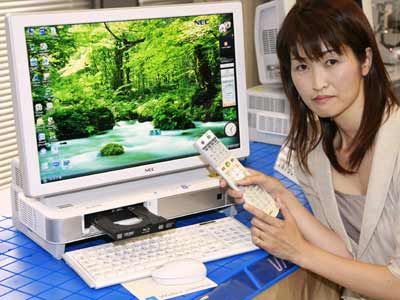
The Japanese company NEC started making personal computers in the 1980s and later developed the world's first liquid-cooled desktop PC, Valuestar VW790. It was equipped with CPU and hard drive liquid-cooling plates. NEC also was a pioneer in shrinking the size of computers. See the next page to learn more.
Advertisement
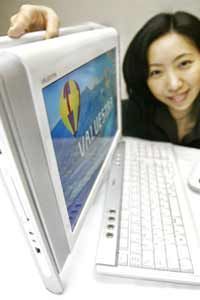
NEC's Valuestar N desktop computer takes up less space than an A4 sized laptop. The next computer is designed to pack computing power in a teeny tiny case.

Apple also got in on the small trend with the Mac mini that was introduced in 2005. It is 7.7 inches square and has an Intel Core Duo processor.
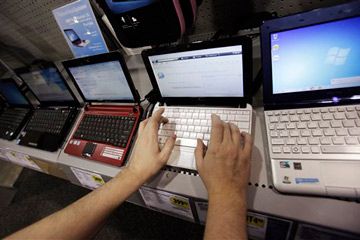
The trend of small also carried over to portable computers. Netbooks were among the hottest items on sale during the 2009 holiday shopping season. Netbooks are smaller than laptops, but still feature a keyboard. The next technology revolutionized how we interact with computers.
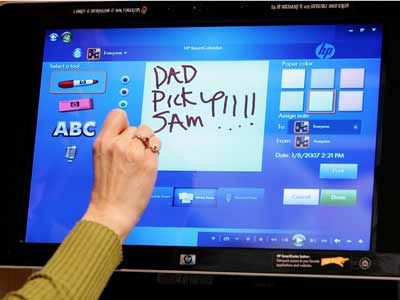
Touch screen computer technology is demonstrated here with the HP Touchsmart PC. It uses Windows Vista and works similarly to the iPhone. The next computer also uses touch-screen technology.

Visitors check out the Samsung Ultra Q1 mobile PC, which can function as a PC, a gaming console, a navigator and an entertainment center. It features built-in surround sound, WiFi and Windows Vista. Touch screen computers became mainstream with the product on the next page.
Advertisement
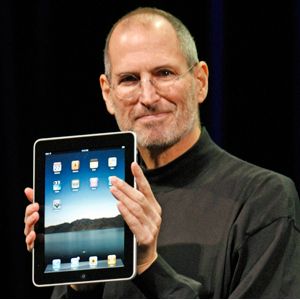
Apple's iPad is arguably the most famous tablet computer on the market today. Buyers can choose from WiFi only or WiFi plus 3G and either the iPad or iPad 2. Apple hasn't been happy about the next tablet.
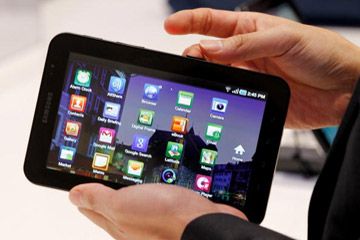
The Samsung Galaxy Tablet comes with lots of bells and whistles, and the hardware is very similar to the iPad, so similar that Apple has been filing lawsuits for patent infringement. The Samsung tablet runs on Google's Android operating system versus Apples's iOS5.
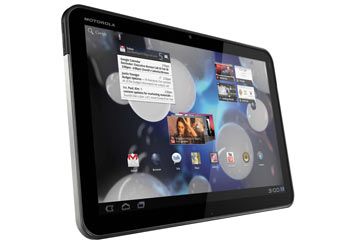
The Motorola Xoom was the first Android tablet, and is just one of many Android tablets on the market. Currently, Android tablets have better video resolution that their Apple competition, but iPads have many more available apps. If you own a BlackBerry, you may want the next tablet.
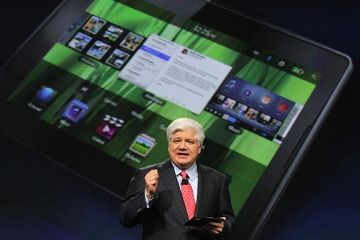
The BlackBerry PlayBook is Research in Motion's attempt to tap into the tablet market. It can interface with BlackBerry smartphones, allowing you to access the phone's features on a larger screen. And just like the smartphones of the BlackBerry line, the PlayBook has built-in security measures designed to protect data.
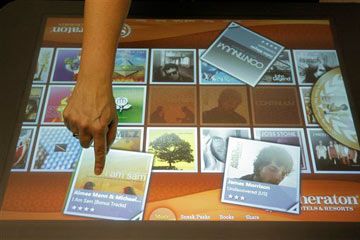
Where does the future of computers go from here? Devices like the Microsoft Surface are pushing computers into new environments. It allows multiple users to share and manipulate information on a tabletop computing interface.
Advertisement
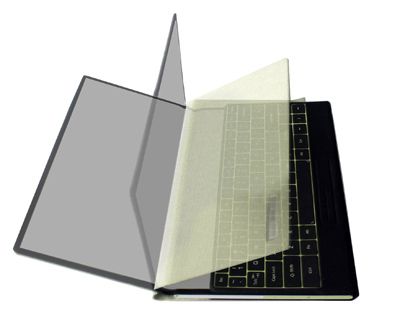
Or, for a different type of innovation, the fabric PC is completely flexible -- it even has a fabric keyboard. The computer uses e-paper technology to allow the display screen to be paper-thin and bendable. While you wouldn't wear a fabric PC, you could wear the next computer.
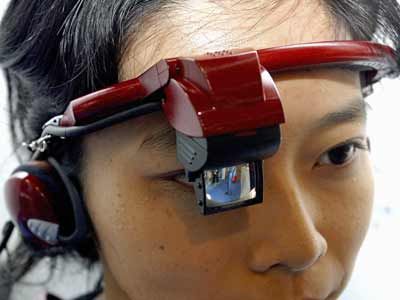
A woman wears Team Tsukamoto's prototype of a wearable PC. Wearable PCs have been used in behavioral and health sciences. There is a growing interest in computer clothing. Take a look at the next picture to learn more.
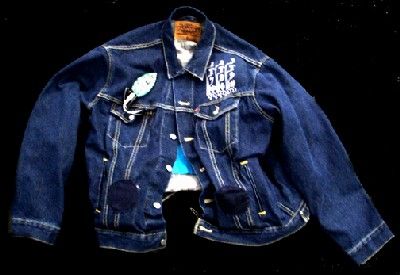
Using conductive fibers, MIT Media Lab created the Musical Jacket, which is being marketed by Levi in Europe. It runs a MIDI synthesizer and has a capacitive sensitive keyboard. See how Korea is taking computers to another level next.
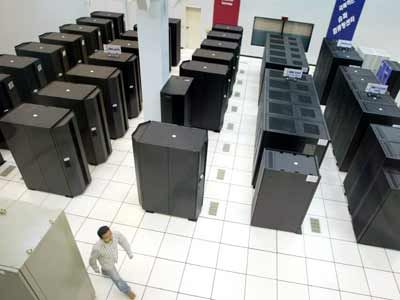
An employee of the Korea Institute of Science and Technology Information checks a bank of supercomputers. Korea wants to turn the country into an 'Ubiquitous Society' where computers and the Internet are always available. See how nuclear research uses computers next.
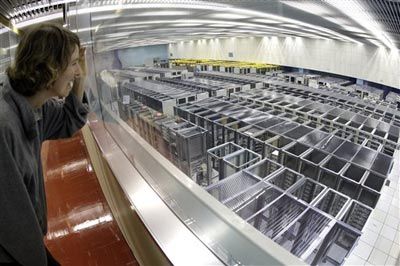
Supercomputers are also used at CERN, the European Organization for Nuclear Research, home of the Large Hadron Collider. More than 100 research institutions worldwide help process the massive amounts of data CERN generates, primarily in high-energy physics research. To learn more about computers,test your knowledge with the Ultimate Computer History Quiz or check out our Computer Hardware Channel.
Advertisement